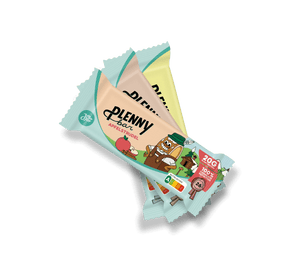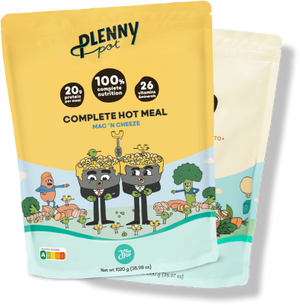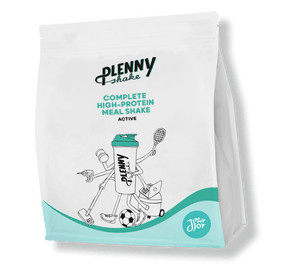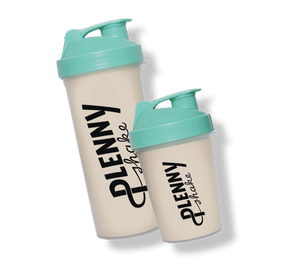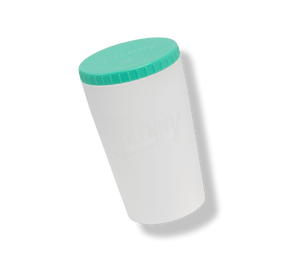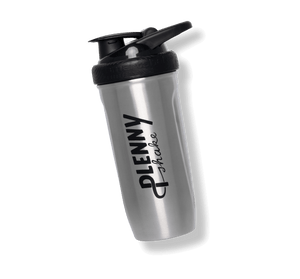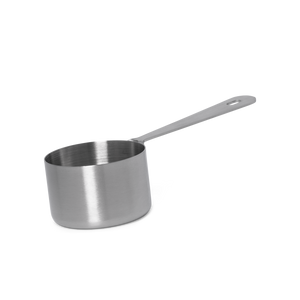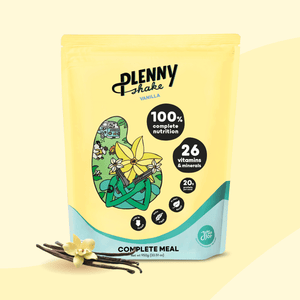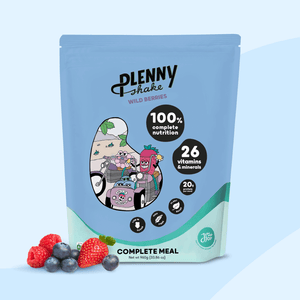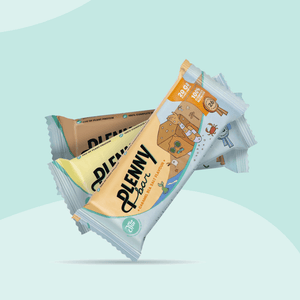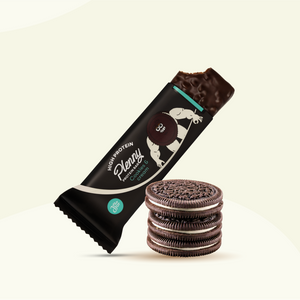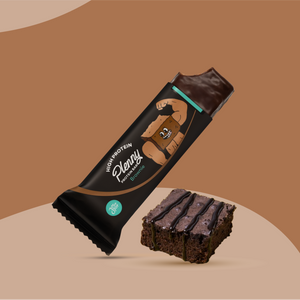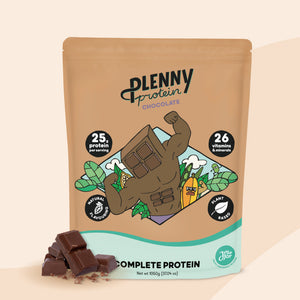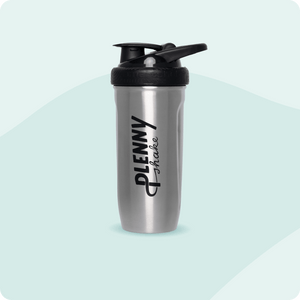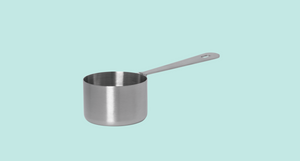
Our mission to create the healthiest meals scientifically possible never stops! And we accomplished it yet again with an even healthier and tastier...
Plenny Shake Active v3.1!
Now available in 4 best-selling flavours: Vanilla, Banana, Chocolate, and Strawberry.
Want to know more about the changes we made to the formula? Find out here.
TL; DR:
- 35% more protein
- 19% less fat
- Antioxidants from freeze-dried microalgae: Tetraselmis chuii
Plenny Shake Active v3.0 vs v3.1 nutritional info
|
Plenny Shake |
v3.0 |
v3.1 |
|
|
Per portion (Vanilla) 95g |
Per portion 98g |
|
Energy kJ |
1674 |
1674 |
|
Kcal |
400 |
400 |
|
Fat |
16 |
13 |
|
From which saturated |
2,0 |
1,6 |
|
Carbohydrates |
34 |
32 |
|
From which sugars |
3,8 |
3,8 |
|
Fibre |
7,4 |
6,7 |
|
Protein |
26 |
35 |
|
Salt |
0,66 |
1,1 |
Macronutrient Makeup
Protein
Plenny Shake Active v3.1 contains 35 grams per 400 kcal meal. We increased it by 35%! That’s plenty to keep your muscles growing, help your body repair itself, and keep your stomach full throughout the day [2]. Especially if you lead an active lifestyle. Studies show that a higher protein intake significantly enhances muscle strength and size for prolonged resistance exercise training [3].
Fat
We reduced the total fat content of the Plenny Shake Active Banana from 16 g to 13 g and saturated fat content from 2 g to 1.6 g.
Fibre
Fibre for the Plenny Shake Active Banana v3.1 was reduced by just 0.7 g. But not to worry: with 6.4 grams of fibre per meal, Plenny Shake Active Banana v3.1 is still high in fibre!
Carbs
We decreased the total carbohydrate content of the Plenny Shake Active v3.1 by 2 grams per portion. This slight decrease is nothing to worry about since it is still within the recommended amounts as established by the EFSA and considered low in sugar [1]!
Micronutrient Makeup
Salt
Because we increased the amount of protein for Plenny Shake Active Banana v3.1 from 26 to 35 grams, the total salt content increased from 0.66 g to 1.1 g per meal. Because it contains all nine essential amino acids, the soy protein we use is an excellent choice for a high-quality plant-based protein source - but it’s quite salty. Not to worry though: the amount of salt per meal is still well below any unwanted levels. The World Health Organization states that “a salt intake of less than 5 grams per day for adults helps to reduce blood pressure and risk of cardiovascular disease, stroke and coronary heart attack.” [7]
Antioxidants from microalgae
Plenny Shake Active Banana v3.1 contains freeze-dried microalgae: Tetraselmis chuii. This alga contains a lot of the antioxidant “superoxide dismutase” (or: SOD). Our body naturally produces this antioxidant, but as we age, we produce less and the quantity decreases. SOD is the first antioxidant in the line of defence against ROS: reactive oxygen species. These can damage proteins, lipids and genetic material [4]. When there are too many ROS and too few antioxidants to battle them, the antioxidant defense system gets overwhelmed, and the body will experience oxidative stress [5].
Many diseases, including cancer, atherosclerosis, diabetes, chronic inflammation, neurodegenerative disorders, and cognitive disorders, are thought to be influenced by oxidative stress. But studies have shown the advantages of antioxidant supplementation to reduce oxidative stress. (Check out the review from Stephenie et al., 2020 [6]).
Tetraselmis chuii has a high SOD activity, higher than 30.000 U/g (the highest known until now) [4]. So to prevent your antioxidant defense system from getting overwhelmed, you’re now getting some extra SOD from your favourite Plenny Shake Active v3.1!
Sources
- EFSA Panel on Dietetic Products, Nutrition, and Allergies (NDA), 2010. Scientific opinion on dietary reference values for carbohydrates and dietary fibre. EFSA Journal, 8(3), p.1462.
- EFSA Panel on Dietetic Products, Nutrition and Allergies (NDA), 2012. Scientific opinion on dietary reference values for protein. EFSA Journal, 10(2), p.2557.
- Morton, R.W., Murphy, K.T., McKellar, S.R., Schoenfeld, B.J., Henselmans, M., Helms, E., Aragon, A.A., Devries, M.C., Banfield, L., Krieger, J.W. and Phillips, S.M., 2018. A systematic review, meta-analysis and meta-regression of the effect of protein supplementation on resistance training-induced gains in muscle mass and strength in healthy adults. British journal of sports medicine, 52(6), pp.376-384.
- Ramirez, P., Torres, S., Lama, C., Mantecón, L., Unamunzaga, C. and Infante, C., 2020. TetraSOD® activates the antioxidant response pathway in human cells: An in vitro approach. African Journal of Biotechnology, 19(6), pp.367-373.
- Sies, H., 2017. Hydrogen peroxide as a central redox signaling molecule in physiological oxidative stress: Oxidative eustress. Redox biology, 11, pp.613-619.
- Stephenie, S., Chang, Y.P., Gnanasekaran, A., Esa, N.M. and Gnanaraj, C., 2020. An insight on superoxide dismutase (SOD) from plants for mammalian health enhancement. Journal of Functional Foods, 68, p.103917.
- World Health Organization (2020). Salt reduction. [online] Who.int. Available at: https://www.who.int/news-room/fact-sheets/detail/salt-reduction#:~:text=Salt%20intake%20of%20less%20than,reduction%20in%20high%20blood%20pressure. [Accessed 20 Oct. 2022].

 Everything You Need In One Meal
Everything You Need In One Meal
 Stay Full For 3-5 Hours
Stay Full For 3-5 Hours
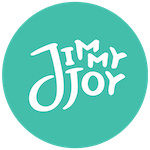




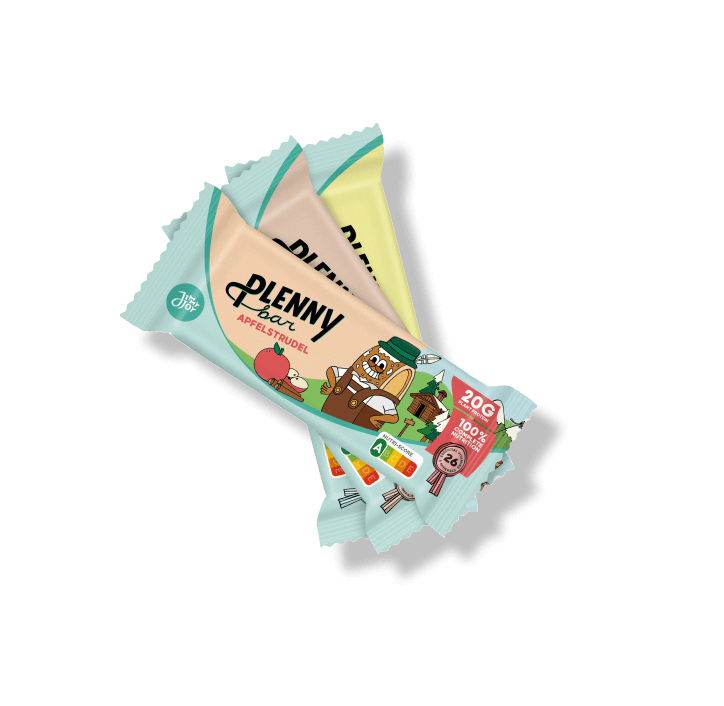
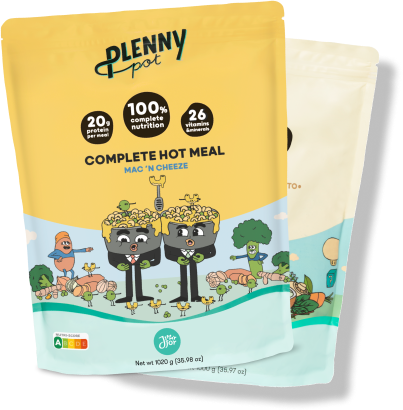

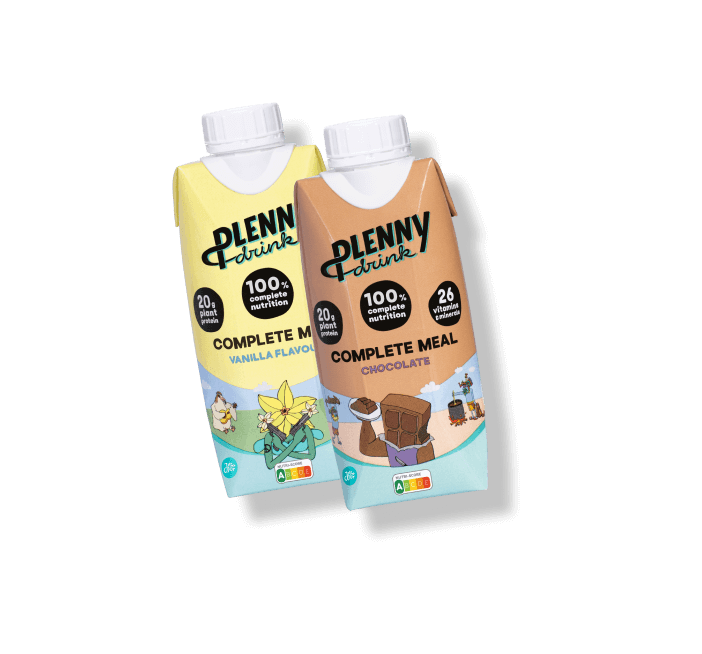
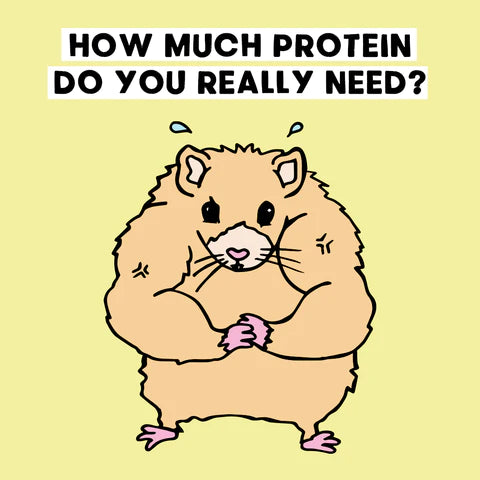











 Product added to cart
Product added to cart


